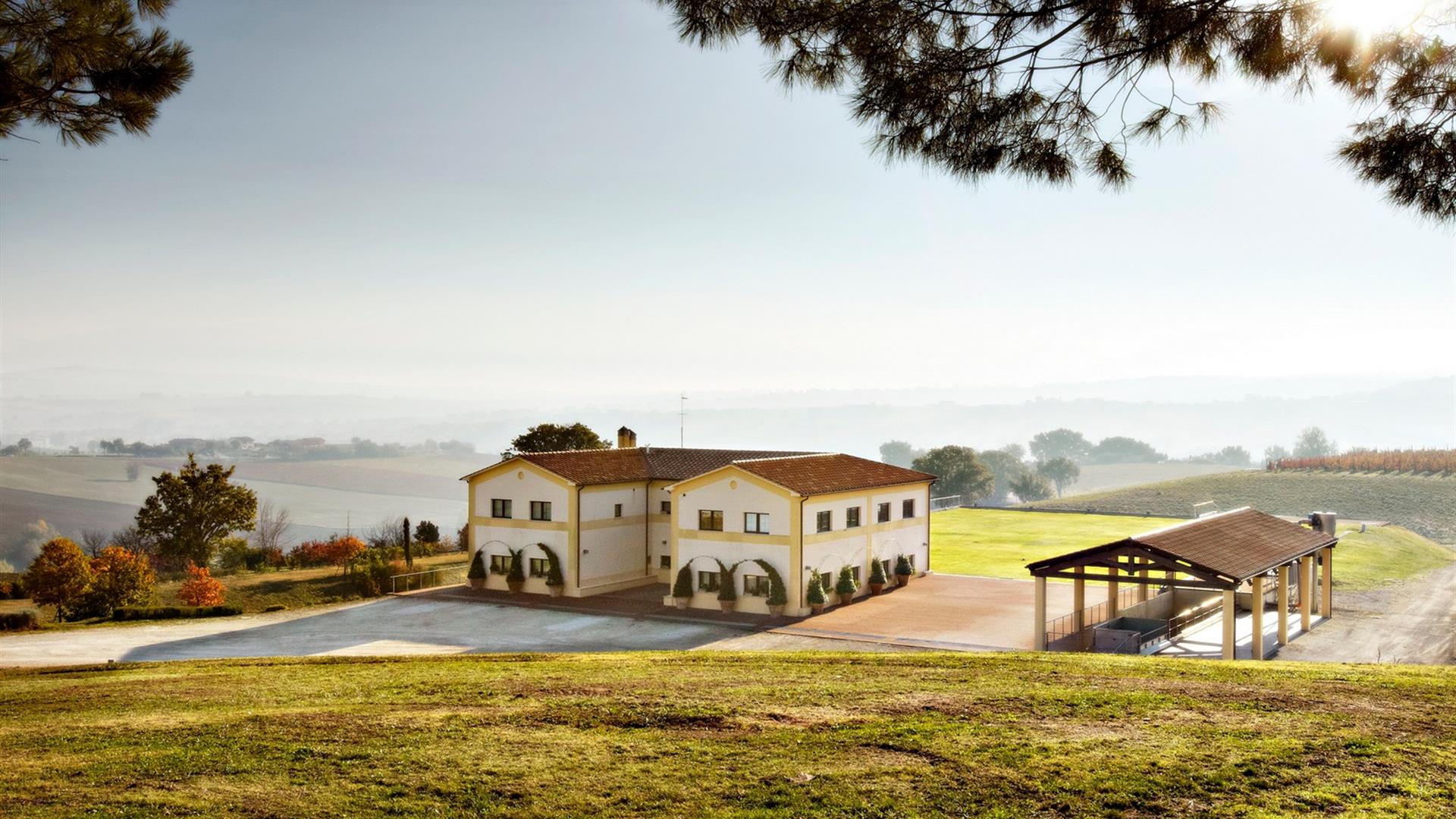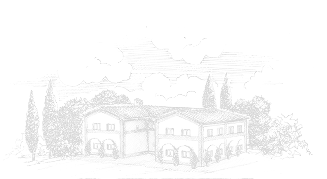Perugia between art and history: what to see in the city and its surroundings
-
May 13, 2021min
Navigate to
- Perugia, una città universitaria tra antichità e modernità
- What to see in Perugia: walking in the heart of the city
- Piazza IV Novembre and la Fontana Maggiore
- Palazzo dei Priori
- San Lorenzo Cathedral
- L’Acquedotto
- Other places not to be missed
- Perugia and its flavours
- What to see around Perugia
- Tasting the best local wines: a valuable experience for an unforgettable journey
Capital of Umbria, not everyone knows that Perugia is also one of the oldest and most famous university cities in the world. Between narrow alleys and fortified walls, the old town holds artistic and monumental treasures of great charm, which can transport those who visit them back in time, in a suspended and almost magical atmosphere. Perfect for spending a weekend both in summer and in winter, thanks to the amount of places that are worth a visit and a short walk from other beauties of the Umbrian territory, this city is the ideal choice for those who want to discover one of the Italian jewels, far from the typical crowds of other more famous city-museums.
So we just have to find out what to see in Perugia and its surroundings.
Perugia, una città universitaria tra antichità e modernità
The real core of what has become Perugia was formed around the second half of the sixth century BC. and soon became one of the most important Etruscan cities, with an imposing wall, still visible today.
Under the Roman name, ancient “Perusia” was then the protagonist of a legendary and terrible civil war between Octavian Augustus and Marcus Anthony, which flows into the Bellum Perusinum which leads to the siege of the city between 41 and 40 BC. and its subsequent destruction. Emperor Augustus himself rebuild it a few years later and named it Augusta Perusia. After the barbarian invasions, Perugia reached its peak during the Middle Ages until 1531, when it was subjected to the State of the Church. During the Late Middle Ages, in fact, there are the first attestations of the birth of the Government of the Consuls and the city of Perugia and some of the masterpieces that we can still admire while walking in the old town, such as the Fontana Maggiore and the magnificent Palazzo dei Priori. In addition, in 1308, the University was also established, one of the oldest and most important in Europe, which today ensures that it has a young and lively soul, despite the centuries of history behind it.
What to see in Perugia: walking in the heart of the city
Perugia is able to offer a lot to the visitor: the old town is in fact a real concentration of monuments and attractions. The numerous Etruscan, Roman and Gothic architectural and artistic legacies have shaped the city giving it a multifaceted face, which deserves to be discovered without haste in every season of the year.
Here are the places not to be missed during a walk in this ancient city.
Piazza IV Novembre and la Fontana Maggiore
Each city has its beating heart, and for Perugia is just Piazza IV Novembre, former Roman Forum. But it is during the Middle Ages that it changes appearance and acquires great prestige, becoming the catalyst of the main attractions of the city. In fact, the five main streets converge from here, known as “Vie Regali”, including Corso Vannucci which, with its shops and its historic premises, represents the heart of Perugian social life. In the center of the square stands the splendid Fontana Maggiore, built between 1275 and 1278 by Nicola and Giovanni Pisano and today a symbol of that lively and magnificent medieval Perugia. The fountain rests on a circular staircase and consists of two pools of pink and white stone, richly decorated with statues of nymphs, finally surmounted by a bronze basin. Located between the Palazzo Comunale and the Duomo, it was built to celebrate the completion of the new aqueduct.
Palazzo dei Priori
It is accessed from Piazza IV Novembre through a thirteenth-century portal decorated with statues of the griffin and the lion. Palazzo dei Priori, built in the gothic style between 1293 and 1443, is one of the best examples of a public palace from the municipal age. In addition to the beauty of the architecture, perhaps not everyone knows that inside it houses another priceless treasure: the top floors, in fact, is home of the magnificent National Gallery of Umbria, whose rich artistic heritage boasts the masterpieces of the famous Duccio di Buoninsegna, Piero della Francesca, Beato Angelico, Pinturicchio and Perugino, Raffaello’s teacher.
San Lorenzo Cathedral
The side facade of the Cathedral – or Duomo – of Perugia is the backdrop to Piazza IV Novembre, and is perhaps the most suggestive for the different elements that compose it, such as the wide staircase leading to the entrance, the great Renaissance portal access, the fifteenth-century pulpit next to the door composed of ancient fragments and cosmatesque mosaics and, finally, the beautiful Loggia del Braccio. The main facade, however, less majestic, overlooks Piazza Danti and is characterized by a Baroque portal from 1729. To admire the interior of the Cathedral, with its frescoes and stuccos, and to be absolutely seen is the Reliquary of the Holy Ring, considered one of the masterpieces of the Renaissance goldsmith’s art.
L'Acquedotto
The Perugia Aqueduct is part of the things not to be missed and is one of the most particular attractions of the town. It is a rather complex hydraulic engineering work – already started in Roman times but whose main works were carried out in medieval times – because it was able to transport water to a city full of gradients without using any pump. Decommissioned in the mid-1800s, it was later decided to transform the aqueduct into a hanging path to better connect the city, and today it offers one of the most beautiful and picturesque promenades in Italy. Among stairways and parapets, the part that connects Porta Sant’Angelo, another monument to visit, is particularly striking, with a bridge supported by a dozen bays with large arches and colorful houses.
Other places not to be missed
Perugia is a little gem to discover. We cannot miss a visit to Rocca Paolina, so much praised by Giosuè Carducci: it is a real fortress built by Pope Paul III after the sack of Rome, a symbol of papal authority and power until 1860, the year of the annexation to the Kingdom of Italy. Or even, near the Fontana Maggiore, in Piazza Danti, not to be missed is the Etruscan Well, an incredible hydraulic work built in the three centuries before Christ that goes underground for 37 meters deep. If you want to walk in the green, especially during a beautiful spring day, take a walk to the “Giardino del Frontone“, the first public garden in the city which takes its name from the “front” of the triumphal arch that closes the amphitheater, built on project by Baldassare Orsini (1778-1780). Don’t miss the six statues depicting the Arts.
Perugia and its flavours
Each region has its own flavors and Perugia collects a very rich culinary tradition. The “king” of Umbrian cuisine is undoubtedly the black and white truffle, undisputed star of various typical dishes, including “stringozzi“, a long and thick pasta shape. There are also quality cured meats, which can be accompanied by the famous “Torta al testo“, a sort of focaccia with simple ingredients that testifies to the Roman past of the region. The tradition includes the classic “palombaccio alla perugina” and the pigeon alla ghiotta, as well as desserts, including the “Brustengolo“, a cake made with corn flour, raisins, apples, walnuts and pine nuts. To pair these specialties, you cannot miss a good glass of wine, taking advantage of an excellence of the territory around Perugia, the Montefalco Sagrantino DOCG.
What to see around Perugia
Perugia is also the city of chocolate, and therefore for the most greedy you can not miss a visit to the Chocolate House, that is the historical museum of the famous “Perugina” which is located in San Sisto, not far from the city. A stone’s throw from Perugia, there is one of the most enchanting natural landscapes of the Umbrian territory, that is the one overlooking Lake Trasimeno, perfect for any activity. Trekking lovers will be able to walk along the many paths that cross lush woods, while for those who want a different adventure they can get on a bicycle and ride the perimeter of the lake, to discover the numerous and fascinating villages, such as the wonderful Castiglione del Lago or Tuoro sul Trasimeno with the leaning tower of Verrazzano or Passignano sul Trasimeno. If you want to explore the surroundings of Perugia, you cannot miss a visit to Assisi, a splendid village perched on the hill from which the most famous saint in history, San Francesco, started. Get lost in its uphill streets that lead to the Basilica, and you will breathe the air as if suspended. Time also seems to have stopped in Spello, near Perugia, a town of Roman origin but whose historic center, once again, shows its medieval imprint. The churches of Santa Maria Maggiore and Sant’Andrea are embellished with works by Perugino and Pinturicchio, and in the period of Corpus Domini the city lights up at the Infiorata: the city streets are decorated with extraordinary artistic creations made with … flower petals.
Tasting the best local wines: a valuable experience for an unforgettable journey
The Umbrian territory is still unknown, but as we have seen it offers an inestimable wealth of artistic, architectural, natural and even food and wine treasures. Perugia is undoubtedly the most precious diamond, but the surroundings also deserve to be explored in all their splendor.
In your list of “things to do”, you cannot miss a visit to Montefalco, one of the most beautiful villages in Umbria also for the breathtaking views that can be admired from its Belvedere – hence the nickname of “Railing of the ‘Umbria “- on the valley below, a land of great wines. Among these, the Rosso, the Grechetto and the Sagrantino stand out, a true symbol of the town, a wine with a ruby color and a sweet flavor. For those who want to discover them, Colpetrone is the perfect choice. It is in fact one of the most important productive realities of the Montefalco DOCG area: after a glass of wine, thanks to Montefalco wine tasting and a walk through the cobbled streets of Montefalco, you can easily return to Perugia, which you can admire in the distance from one of the panoramic points of the village.
If staying in the city can be complicated, especially in periods of greater tourist crowding, why not choose the surrounding hills which, among ancient villages, elegant vineyards and centuries-old olive trees, are able to offer a truly unique experience? In Umbertide, in the center of the Umbrian territory and therefore perfect for reaching places such as Perugia, Assisi, Todi and Lake Trasimeno, there is the charming Tenuta di Montecorona. Here, you can stay in the fascinating Badia, at the foot of the ancient Camaldolese Hermitage that dominates the whole valley. Between a tasting of the famous DOP “Umbria Colli del Trasimeno” Extra Virgin Olive Oil and a walk to discover the Via Francigena, let yourself be enchanted by the timeless charm that the Umbrian territory can offer.
Have we convinced you to discover Perugia and the riches of Umbria?

Còlpetrone
Founded in 1995 with the construction of the current winery, it is one of the most important production realities in the Montefalco DOCG area.

{title}
{description}